https://www.lifegate.it/topinambur
- |
- Jerusalem artichokes are the tubers of flowers up to two meters tall with an intense yellow corolla, the Helianthus tuberosus.
- They are also suitable for diabetics, thanks to the presence of inulin, a carbohydrate that promotes good intestinal function and which has no impact on blood sugar.
- The rather sweet taste is reminiscent of an artichoke, but the crunchy pulp resembles a potato.You can enjoy it raw or cooked.
Jerusalem artichokes, Canadian sunflowers, diabetic potatoes, cane truffles or German turnips, they are always the same, versatile and tasty tubers that color the uncultivated fields yellow with their flowers:the Jerusalem artichokes
Linnaeus (botanist who classified and gave names to plants in the eighteenth century) called Jerusalem artichokes Helianthus tuberosus.He was probably thinking of their flowers which, a bit like sunflowers, tend to follow the sun with their flower heads.In fact, in Greek “Helios” means “sun” and “anthos” means “flower”.
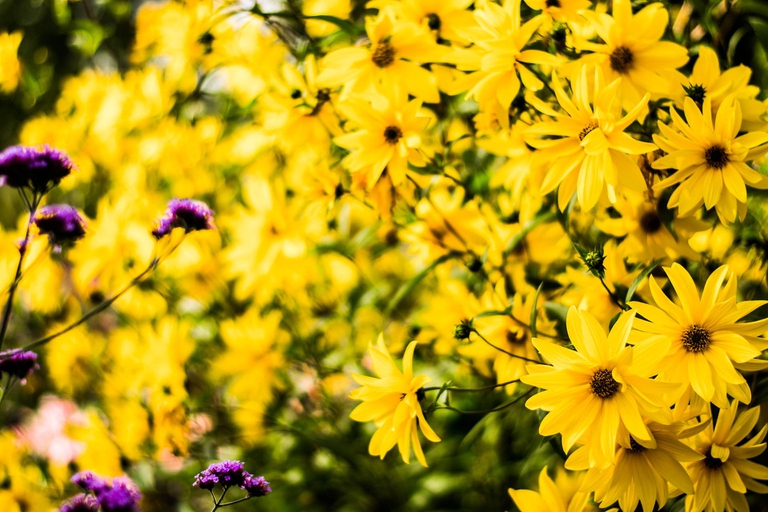
They are originally from North America and of Canada, where the natives consumed them raw and cooked.They then reached the entire American continent.Probably around the 17th century they began to spread Europe.Their yellow flowers which enriched the gardens were much appreciated;in areas of Northern Italy, such as Piedmont, peasant families consumed the tubers in traditional dishes.Piedmont and Veneto, in fact, still cover about half of the Italian production of Jerusalem artichokes.
Characteristics, curiosities and taste of Jerusalem artichokes
They flower at the last warmth of the year, after which, when the tubers develop underground, and after the first cold weather, they are ready to be enjoyed.They are a lumpy bulbous root, with an external color similar to that of a potato.The taste of theirs white pulp And crisp it's quite Sweet And remember that of artichoke.

They contain inulin, a sugar present in the roots made up of fructose which promotes good intestinal function and is also tolerated by diabetics.

Luckily to consume them you don't need to peel them (the peel is also very digestible).Just brush them vigorously to remove any residue of soil and wash them carefully before preparation.There are two varieties:
-
Early white
on the market since the end of August -
Bordeaux
on sale from October to early spring
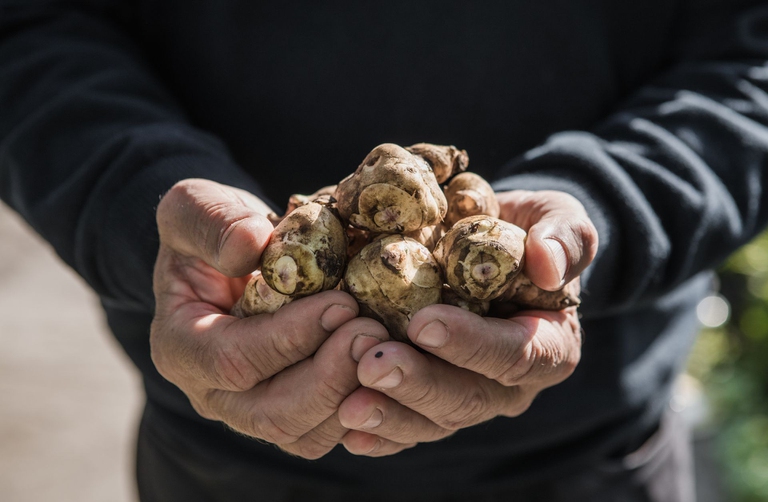
Properties of Jerusalem artichokes and health benefits
Long underappreciated, Jerusalem artichokes are now taking a place on our tables thanks to their remarkable nutritional properties.I am very low in calories (about 30 kcal per 100 grams), eighty percent are made up of water, but are rich in vitamin A And C.They contain 15-20 percent of carbohydrates, amino acids like asparagine and arginine, then several fibers soluble and insoluble which, by promoting the functioning of the intestine, help fight constipation.
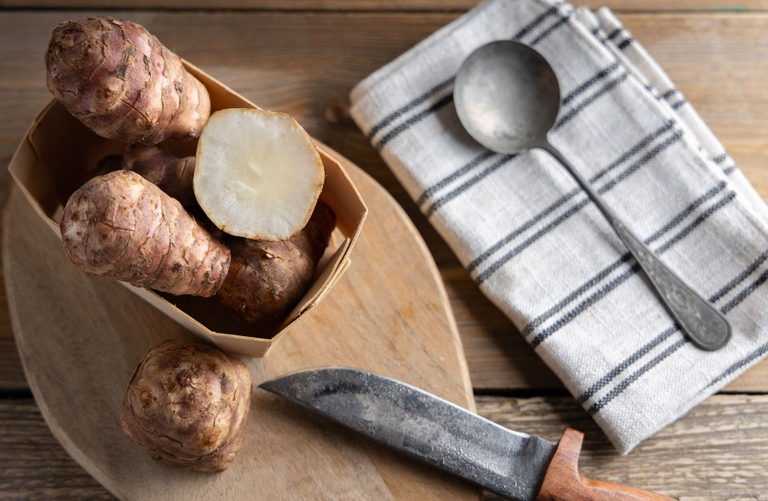
Although they are digestible tubers, people with sensitive intestines should reduce their consumption due to possible meteorism problems.
How to preserve Jerusalem artichokes
It would be perfect to enjoy freshly picked Jerusalem artichokes, ideal for consuming them raw, when you can enjoy all their nutritional properties.
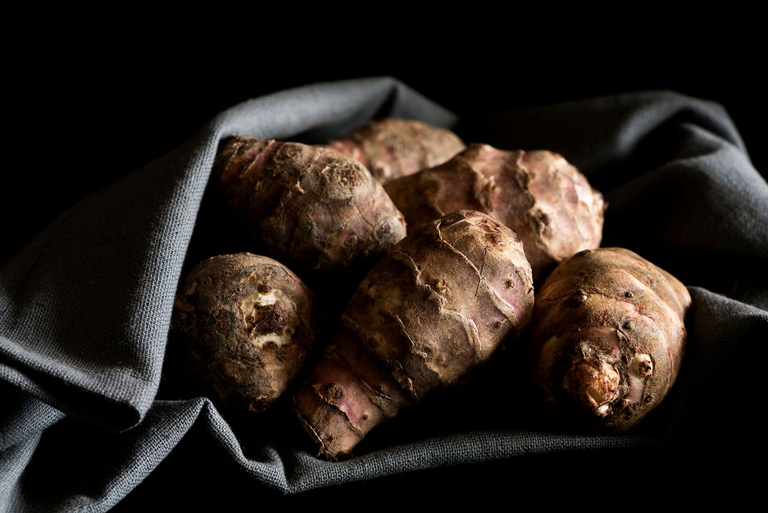
© iStock
If they are not consumed immediately they can be placed in a cool, dark place or stored in refrigerator for approx 10 days, in paper bags, then in a plastic one.Beyond that they would lose their freshness.We advise against freezing them so as not to lose their crunchiness.
Raw or cooked?Sweet tubers in the kitchen
Raw and cooked, they can be enjoyed both ways.Because they do resemble potatoes, but Jerusalem artichokes can also be eaten raw, sliced thinly or grated into salad and in dip dipped in oil, salt and vinegar (to taste).
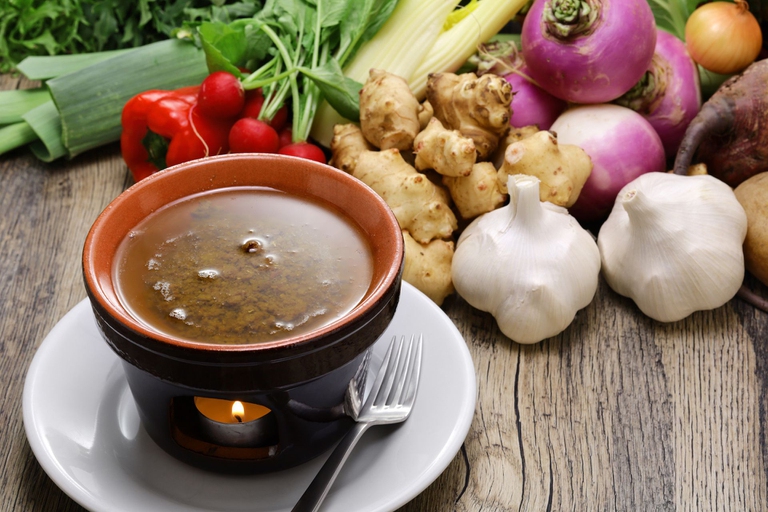
It is essential to remember that you don't need to peel them, but rather just brush and wash them before proceeding with their preparation.The gastronomic tradition Piedmontese, but also Venetian, he always appreciated them very much.Thanks to their sweet and artichoke-like taste they are present in typical dishes such as bagna cauda or moles risottos.
They can then be sautéed in a pan or transformed into the main ingredient of one savory cake, but also au gratin baked, just like potatoes.
For boil them just dip them in boiling water for about 20-25 minutes, or cook them steam, to then season them with extra virgin olive oil, a pinch of salt and aromatic herbs.If you have a sweet tooth, try them fried.Sliced and dipped in boiling oil they become delicious chips.
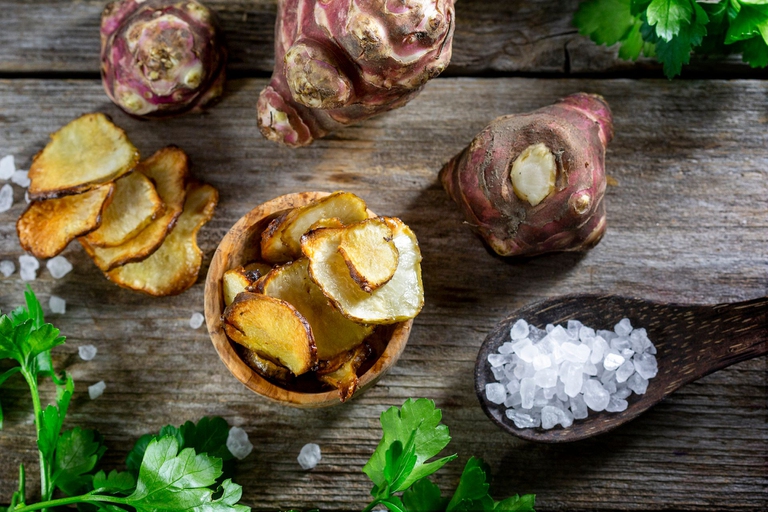
Jerusalem artichokes are therefore a precious culinary rediscovery attentive to taste and health, with an eye to the culinary tradition that is renewed, a good habit to include in our diet.
FAQ on Jerusalem artichoke
- When are Jerusalem artichokes planted? The sowing of Jerusalem artichokes takes place in spring, from March to April.These tubers prefer light, well-drained soil, and require little care once planted.Their hardiness makes them ideal even for less experienced gardeners.
- When is Jerusalem artichoke harvested? The Jerusalem artichoke harvest takes place in autumn and early winter, generally from October to December.It is important to wait for the leaves to yellow and die, a sign that the tubers are mature and ready to be pulled from the ground.
- How do you clean the Jerusalem artichoke? Cleaning Jerusalem artichokes is simple.After collecting them, brush them vigorously to remove any residual soil.It is not necessary to peel them, their thin skin is edible and rich in nutrients, just wash them carefully under running water.
- How to preserve Jerusalem artichokes? To store Jerusalem artichokes, place them in a cool, dark place or in the vegetable drawer of the refrigerator.Wrap them in paper bags before placing them in a plastic bag.Stored in this way, they can last up to 10 days.It is not recommended to freeze them to keep their crunchy texture intact.
This article was last modified on 29 January 2024
